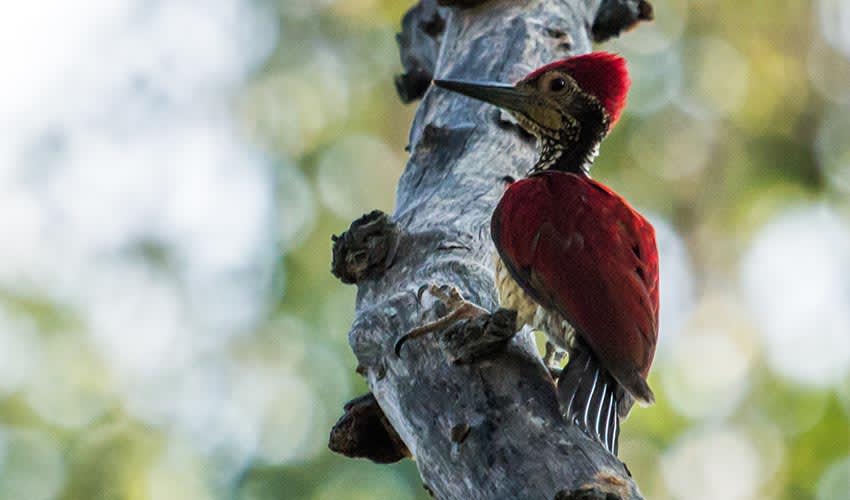Chrysocolaptes
It’s a marvel of biology that they don’t get headaches, thanks to special shock-absorbing structures in their skulls
A group of striking woodpeckers that light up the forests of South and Southeast Asia with their bold colors and loud drumming. Often referred to as flamebacks or greater flamebacks, these birds are instantly recognizable for their brilliant golden-yellow to fiery-red backs, which gleam like embers when they catch the sunlight. Add to that their sharp black bills, strong claws, and often red crests, and you have some of the most eye-catching woodpeckers in the region.
What makes Chrysocolaptes stand out from other woodpeckers is their fiery plumage, size, and presence. They are among the larger woodpeckers in Asia, giving them a commanding look as they cling to tree trunks or hammer away at bark. Their powerful bills aren’t just for show—these birds specialize in chiseling through tough wood to reach insects, grubs, and ants hiding beneath the surface. Their stiff tail feathers act like props, helping them balance while they peck. And unlike some smaller woodpeckers that tap quickly, flamebacks often produce loud, rolling drumbeats that can echo through the forest, serving as both territory markers and love songs.
Behaviorally, flamebacks are active, noisy, and social. They are often found in pairs or small groups, moving energetically from tree to tree. Their loud calls, a series of sharp notes, add to their already noticeable presence. Yet despite their bold appearance and noisy habits, they play a quiet but vital role in forest health—by digging into bark and breaking apart dead wood, they help control insect populations and recycle nutrients. Their nesting behavior is equally fascinating: males and females work together to excavate nest holes in tree trunks, where they safely raise their chicks.
Species in this genus
Luzon flameback
A bird that seems to carry a bit of fire on its back


